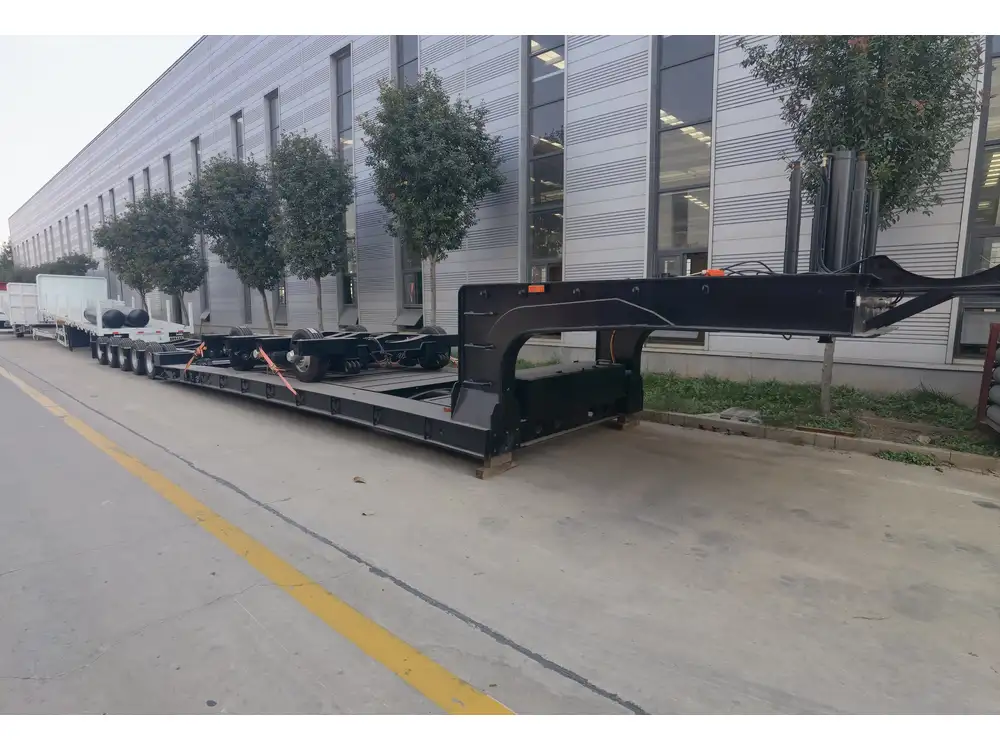When you hit the open road with your dump trailer in tow, a robust and reliable battery system is crucial for efficient operation. One of the most pressing questions for both novice and seasoned operators is: Does a dump trailer battery charge while driving? This article delves into the intricacies of dump trailer battery charging, exploring the roles of battery types, systems, and best practices.
Understanding Dump Trailer Batteries
Types of Dump Trailer Batteries
Lead-Acid Batteries
- Flooded Lead-Acid: The most traditional option, these batteries require regular maintenance and periodic water checks.
- AGM (Absorbent Glass Mat): More resilient and maintenance-free, AGM batteries are excellent for demanding conditions.
Lithium-Ion Batteries
- Compact and lightweight, these batteries offer longer lifespans and faster charging but come with a higher price tag.
Deep Cycle Batteries
- Specifically designed for prolonged discharge cycles, crucial for dump trailers that regularly draw power for hydraulic systems.

Battery Capacity and Voltage
| Each battery type has its unique capacity measured in Amp-hours (Ah). For instance: | Battery Type | Capacity Range (Ah) | Voltage |
|---|---|---|---|
| Flooded Lead-Acid | 100 – 250 | 12V, 6V | |
| AGM | 100 – 250 | 12V | |
| Lithium-Ion | 100 – 300 | 12V |
Understanding capacity is vital to determine how long a battery can run your trailer’s hydraulic system without recharge.
Charging Mechanisms of Dump Trailers
Basic Charging System
Most dump trailers are equipped with a basic charging system that integrates with the vehicle’s electrical system. Here are the primary components involved in charging while driving:
- Tow Vehicle Battery: The battery in your pickup truck or towing vehicle can provide a charge to the dump trailer battery via a 7-way electrical connector.
- Voltage Regulator: This component ensures that the voltage sent to the dump trailer battery does not exceed a specific limit, protecting the battery from damage.

Charging While Driving
When your tow vehicle is running, it can recharge the dump trailer battery through the following mechanisms:
- Alternator Output: Your vehicle’s alternator generates electricity that is directed to both the vehicle’s systems and, via a connection, to your dump trailer battery.
- Battery Isolation System: An isolation system helps prevent the tow vehicle’s battery from discharging while still allowing for the trailer battery to receive charge.
Factors Influencing Charging
- Engine RPM: The alternator generates more power at higher RPMs, enhancing the charge.
- Distance and Duration: Longer trips allow for more extended charging periods, improving battery performance.
- Discharge Rate: If the dump trailer battery is deeply discharged before the trip, it may require more time to recharge fully.
The Role of 7-Way Connectors
The connection types, particularly the 7-way connectors often seen on trailers, are essential for ensuring proper charging and functionality.

Pin Configuration
| The specific pin configuration in a 7-way connector determines functionality: | Pin Number | Function |
|---|---|---|
| 1 | Ground | |
| 2 | Tail Lights | |
| 3 | Left Turn Signal | |
| 4 | Right Turn Signal | |
| 5 | Electric Brakes | |
| 6 | Charge Line (12V) | |
| 7 | Backup Lights |
The Charge Line (Pin 6) is what allows for the charging of the dump trailer battery while driving, ensuring your trailer is ready for use even after long intervals.
Ensuring Proper Connection
For optimal performance, it’s crucial to ensure that your 7-way connector is clean and securely connected. Poor connections can lead to inefficient charging and even electrical failures.
Best Practices for Trailer Battery Management

Regular Maintenance
Regular maintenance prolongs battery life. Consider these practices:
- Check Fluid Levels: For flooded lead-acid batteries, inspect and replenish distilled water as needed.
- Clean Terminals: Corrosion can impede the charge; use a wire brush and protective sprays to maintain cleanliness.
Installing a Battery Monitor
Consider investing in a battery monitoring system. These systems provide real-time data on battery voltage, charge state, and overall health.
Using a Smart Charger
When the trailer is not in use, a smart charger can maintain the battery at the optimal charge level without overcharging, ultimately extending its life.

Keep an Eye on Load
Understand the demands placed on the battery during operation. Limit the usage of electric accessories when possible, and always monitor the battery’s charge level, especially when operating hydraulics.
Troubleshooting Charging Issues
Even with a well-connected charging system, problems can arise. Here’s a short list of troubleshooting tips:
Symptoms of Charging Problems
- Slow or No Raise of the Dump Bed: Indicates insufficient battery power.
- Frequent Need for Jump Starts: Suggests the battery isn’t receiving enough charge while driving.

Solutions
- Inspect Vehicle Connections: Check for frayed wires or corroded connectors in both the tow vehicle and trailer.
- Test the Alternator: Ensure the alternator’s output is adequate; this might require a professional mechanic.
Conclusion
Understanding whether a dump trailer battery charges while driving is vital for any operator’s peace of mind. Your trailer’s functionality relies heavily on a dependable battery system. Through proper knowledge of battery types, charging mechanisms, and best practices, operators can maximize their dump trailer’s performance and longevity.
We encourage all dump trailer owners to regularly maintain their battery systems and remain aware of their charging setups. Increased knowledge effectively improves not only efficiency but also safety on the road. In investing in your dump trailer’s battery health, you invest in your operational reliability.



